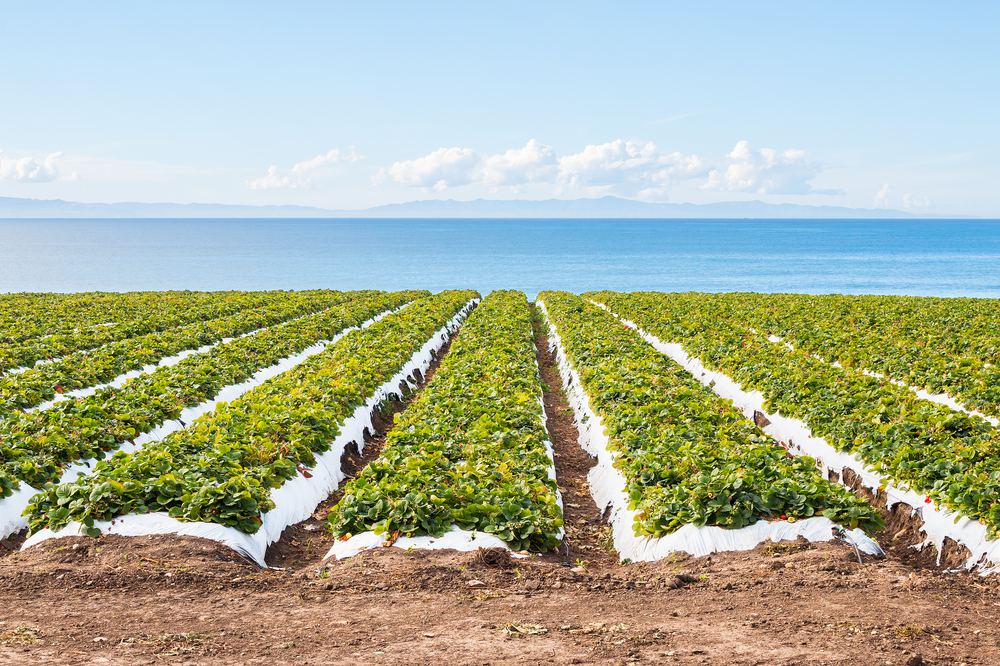
Imagine biting into a perfectly ripe, juicy strawberry, bursting with flavor and sunshine. That taste of summer? In California, it's a reality for much longer than you might think. Let's dive into what makes the Golden State a strawberry paradise and explore the fascinating details of the strawberry growing season in California.
Strawberry Growing Season: A California Advantage
California enjoys an exceptionally long and productive strawberry growing season compared to most other regions. This is primarily due to the state's unique climate, which features mild winters and warm summers, especially in coastal areas. This favorable weather allows for year-round strawberry production in some regions, with peak seasons occurring during the spring and fall.
The key to understanding the California strawberry scene lies in its diverse microclimates. Coastal regions, from San Diego up to Monterey, experience moderate temperatures and consistent fog cover. This allows for extended growing periods, as the plants are shielded from extreme heat and frost. Inland valleys, while experiencing more temperature fluctuations, can still produce significant strawberry crops with proper irrigation and management techniques.
Key Factors Influencing the Strawberry Growing Season
Several factors play a crucial role in determining the success and duration of the strawberry growing season in different parts of California:
- Climate: As mentioned, mild temperatures are essential. Strawberries thrive in temperatures between 60°F and 80°F.
- Sunlight: Strawberries need at least 6 hours of direct sunlight per day. California's abundant sunshine helps in fruit development and sugar production.
- Soil: Well-drained, fertile soil is vital. Sandy loam soils are ideal.
- Irrigation: Consistent watering is necessary, especially during dry periods. Drip irrigation is commonly used to conserve water and deliver nutrients directly to the roots.
- Variety: Different strawberry varieties have varying chilling requirements and are suited to different climates. Some are bred for early-season production, while others are better suited for late-season harvests.
- Pest and Disease Management: Protecting strawberries from pests and diseases is crucial for a successful season. Integrated Pest Management (IPM) practices are widely used to minimize the use of pesticides.
Strawberry Varieties and Their Growing Season
California is home to a wide range of strawberry varieties, each with its unique characteristics and growing season. Here's a glimpse at some popular ones:
- Albion: A day-neutral variety known for its excellent flavor, large size, and consistent production throughout the growing season. It's a workhorse for California growers.
- Monterey: Another popular day-neutral variety, known for its high yields and good flavor. It's often grown in coastal regions.
- San Andreas: Similar to Albion, San Andreas offers a robust flavor and consistent production. It's known for its bright red color and firm texture.
- Chandler: An early-season variety prized for its sweetness and early harvest. It's typically grown in Southern California.
The strategic selection of strawberry varieties allows California growers to extend the harvest period, ensuring a continuous supply of fresh strawberries for consumers.
Regional Differences in Strawberry Production
The California strawberry growing season isn't uniform across the state. Different regions experience variations in harvest times and production volume.
Southern California
Southern California, particularly areas like Oxnard and Santa Maria, boasts some of the earliest strawberry harvests in the state. Due to the mild climate, growers can often begin harvesting as early as January or February. Production typically peaks in the spring and continues throughout the summer, with a smaller fall crop.
Central Coast
The Central Coast, including areas like Watsonville and Salinas, is the heart of California's strawberry industry. This region benefits from consistent fog cover and moderate temperatures, allowing for year-round production. The peak harvest season typically occurs during the spring and fall, with strawberries available throughout the summer and winter months.
Northern California
Northern California, while not as dominant in strawberry production as the Central Coast, still contributes significantly to the state's overall output. The strawberry growing season in this region typically begins later in the spring and continues through the summer. Cooler temperatures can sometimes limit production compared to Southern California and the Central Coast.
Challenges and Innovations in California Strawberry Farming
While California enjoys ideal conditions for strawberry production, growers face several challenges, including:
- Water Scarcity: California's ongoing drought has placed significant pressure on water resources. Growers are adopting water-efficient irrigation techniques, such as drip irrigation and deficit irrigation, to conserve water.
- Labor Costs: Harvesting strawberries is labor-intensive. Rising labor costs are a significant concern for growers.
- Pest and Disease Management: Controlling pests and diseases, such as spider mites, aphids, and fungal diseases, requires careful monitoring and management. Integrated Pest Management (IPM) practices are used to minimize pesticide use.
- Soil Health: Maintaining healthy soil is essential for long-term productivity. Growers are using cover crops, composting, and other soil-building practices to improve soil health.
Despite these challenges, California strawberry farmers are constantly innovating to improve efficiency, sustainability, and fruit quality. They are exploring new technologies, such as robotic harvesting, precision irrigation, and advanced pest management techniques, to ensure a sustainable future for the industry.
Speaking of maintaining healthy soil, having the right tools neatly organized can make a big difference. TheKeomaisyto Garden Tool Organizer With Basket can help keep your yard tools organized, making gardening more efficient and enjoyable. With its 3-tier design and ample storage, this heavy-duty holder is perfect for sheds, yards, and garages. You can find it on Amazon here: https://amzn.to/4d0g LFg.
The Future of Strawberry Growing in California
The future of strawberry growing in California looks bright, with ongoing research and innovation focused on developing new varieties, improving production practices, and addressing environmental challenges. The California Strawberry Commission, a grower-funded organization, plays a crucial role in supporting research, education, and promotion of California strawberries.
Consumers can continue to enjoy fresh, delicious California strawberries year-round, thanks to the dedication and ingenuity of the state's strawberry farmers.